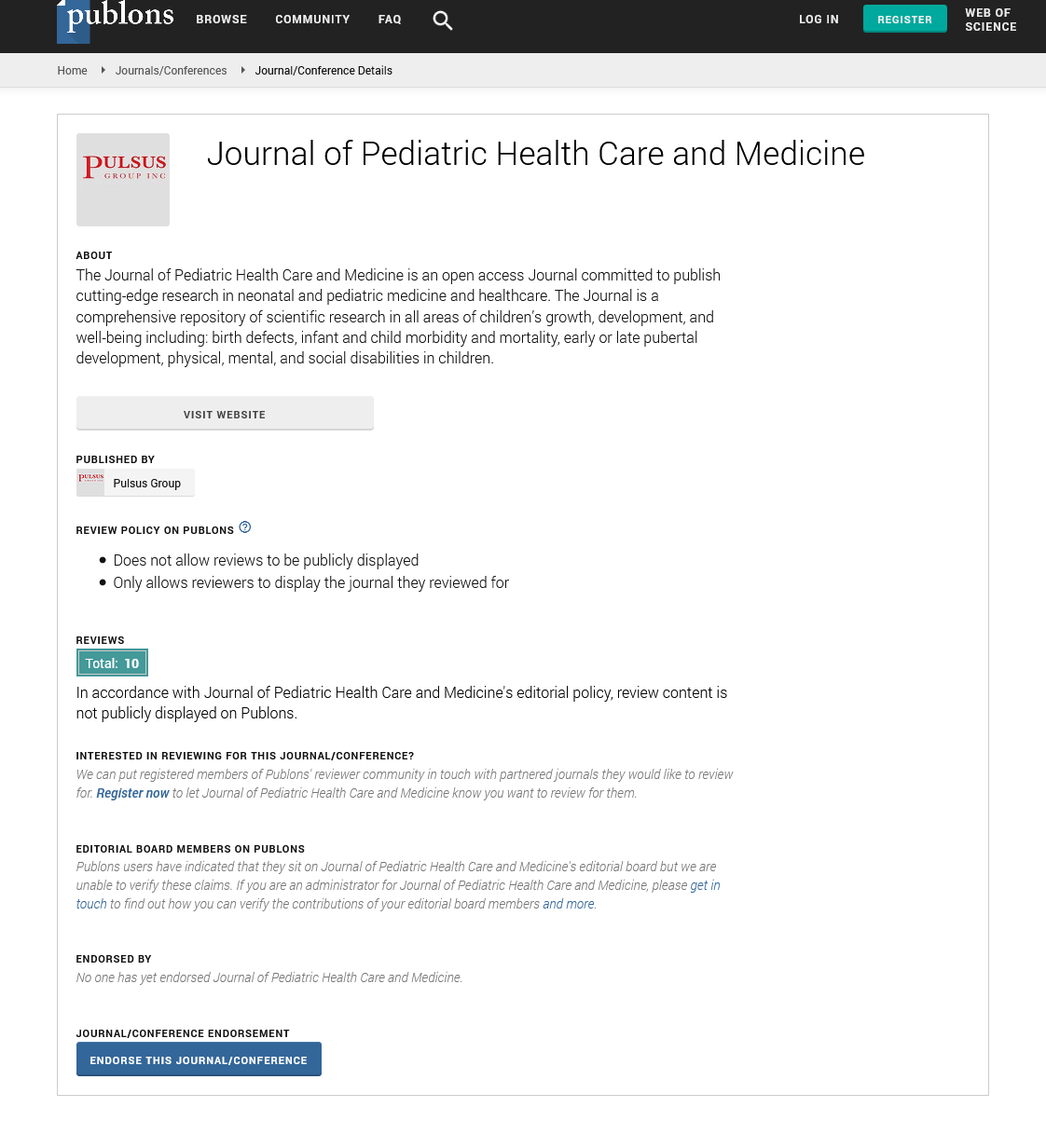Cephalohematoma in newborn babies epidural hematoma associated with intraosseous hematoma factor viii deficiency
Received: 04-Sep-2021 Accepted Date: Sep 18, 2021; Published: 25-Sep-2021
Citation: Cathenna Chiyo. Cephalohematoma in a newborn babies epidural hematoma associated with intraosseous hematoma factor viii deficiency. J Pediatr Health Care Med. 2021;4(5):6.
This open-access article is distributed under the terms of the Creative Commons Attribution Non-Commercial License (CC BY-NC) (http://creativecommons.org/licenses/by-nc/4.0/), which permits reuse, distribution and reproduction of the article, provided that the original work is properly cited and the reuse is restricted to noncommercial purposes. For commercial reuse, contact reprints@pulsus.com
Abstract
Female child gave cephalohematoma over the temporoparietal district on the right side. Figured tomography (CT) uncovered the presence of a basic epidural hematoma (EDH) and as sociated skull crack with correspondence between the hematomas. Goal of the cephalon hematoma was trailed by decrease in the size of the EDH. CT uncovered fix without the requirement for an employable strategy. Goal is shown for neonatal EDH with gentle indications and condensed cephalohematoma.
INTRODUCTION
The Epidural hematoma (EDH) is uncommon in infant in fants contrasted and different kinds of intracranial hemorrhages though cephalohematoma is regularly experienced get-togethers. The decision of treatment relies upon the system of dying. We depict a child with EDH and cephalohematoma in a similar locale treated effectively by just goal of the cephalohematoma. Cephalohematomas in the infant are very much portrayed and are regularly identified with vaginal birth injury. Hematomas might happen in the subcutaneous, sub aponeurotic, or sub periosteal spaces. We present an instance of an intraosseous hematoma as an introducing indication of figure VIII inadequacy an infant. This case is interesting a direct result of the strange appearance and area of the hematoma and the exceptional measure of ensuing bone rebuilding. We imagined that the bone renovating was connected to the expansible idea of this sore, which proposed tedious in utero discharge [1].
Case Report
A young lady was conceived immediately after an ordinary pregnancy at 38 weeks of growth. Her weight was 2800 g, stature 46.2 cm, and head periphery 30.5 cm. She had a delicate discernible mass over the temporoparietal region on the right side. Cut of the mass on the seventeenth day of life uncovered a hematoma that repeated a couple of days after the fact [2]. Figured tomography (CT) showed an EDH nearby the cephalohematoma. She was alluded to our emergency clinic for conceivable treatment. On affirmation, a plain skull x-beam film showed a direct break in the parietal locale on the right side. The CT examine taken at the other medical clinic showed an is Odense lentiform mass in the parietal locale on the right side that was deciphered as an EDH. The subcutaneous hematoma was delicate and non-pulsatile and had a measurement of 3.5 cm [3]. Neurological and actual assessments uncovered no irregularities. Her craving and temper were typical. Lab assessments including hematology, blood science, coagulation, and urinalysis were all typical aside from a marginally expanded serum bilirubin level. The cephalohematoma vanished on the twentieth day of life. CT showed critical decrease of the EDH and a correspondence between the cephalohematoma and the EDH. She was released from the clinic without direct intercession. She was followed up at an outpatient facility. CT 3 months after the fact showed total vanishing of the EDH [4].
Conclusion
Cephalohematomas are not remarkably recognized in typical newborn children upon entering the world. In any case, our instance of this uncommon appearance and area of an intraosseous hematoma, identified with the known factor VIII lack, is by all accounts novel for two reasons. To begin with, reflectively, this was the primary indication of the youngster’s coagulation pathologic irregularity as it was available at the hour of birth and likely demonstrated in utero dying. Cephalohematomas related exclusively to vaginal birth injury in typical newborn children for the most part don’t happen until a few hours after birth. Second, the appearance is not the same as that of an ordinary cephalohematoma. A few reports of interosseous hematomas have been portrayed, albeit none that happened in a pediatric patient with coagulopathy. Yuasa et al portrayed an instance of an interosseous hematoma that created after a far off head injury. Not depicted, however, is secluded, intraosseous draining inside the skull present at parturition. Thusly, we recommend that the determination of a draining problem may be considered in a baby with such a strange skull sore that is available upon entering the world. Desire ought to be endeavored in neonatal EDH muddled by condensed cephalohematoma with gentle manifestations. Great clinical status and non-disturbing discoveries on rehashed CT checks are compulsory for perception. Notwithstanding, if goal ends up being inadequate, surgeries ought to be utilized.
REFERENCES
- Aoki N. Epidural hematoma communicating with cephalhematoma in a neonate. Neurosurg. 1983;13:55-57.
- Ballance AC, Ballance CA: Intracranial hemorrhage in the newborn. Lancet. 1922;2:1109-1112.
- Gonzalez CF, Grossman CB, Masdeu JC. Head and Spine Imaging. New York: John Wiley & Sons. 1985;693.
- Behrman RE, Vaughan VC. Nelson Textbook of Pediatrics. 13th ed. Philadelphia: W.B. Saunders Company. 1987;386-387.






